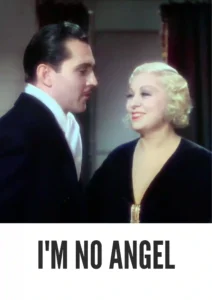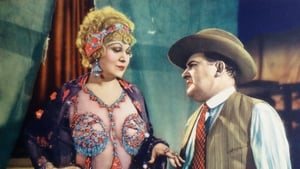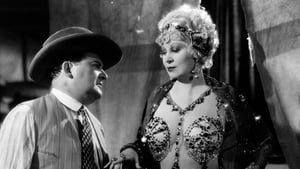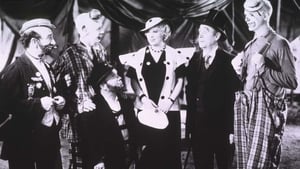Video Sources 0 Views
- Watch trailer
- I'm No Angel 1933 Colorized


Synopsis
Table of Contents
ToggleSassy, Bold, and Hilarious: I’m No Angel (1933) in Vibrant Color

Step into the daring world of I’m No Angel, a hilarious and provocative comedy from 1933, starring the iconic Mae West. Now beautifully colorized for a dazzling viewing experience, this film showcases West’s wit and charm as she navigates love and fame. This HD download brings a risqué and entertaining piece of cinematic history to your screen, perfect for fans of classic comedies and those who appreciate bold, trailblazing performances.
I’m No Angel Storyline: A Circus Star’s Rise
I’m No Angel tells the story of Tira (Mae West), a dazzling circus performer with a sharp wit and even sharper instincts. When she finds herself embroiled in a scandal, Tira decides to take matters into her own hands and defend herself in court.As Tira navigates the legal system, she becomes a sensation, captivating audiences with her unapologetic attitude and magnetic personality. Along the way, she encounters Jack Clayton (Cary Grant), a wealthy socialite who finds himself drawn to her charm. A fiery romance ensues as Tira balances her career, her newfound fame, and her complicated love life. Ultimately, I’m No Angel is a celebration of female empowerment, showcasing Mae West’s fearless and groundbreaking portrayal of a woman who defies societal expectations.
Movie Cast
The film features a stellar cast of actors who bring this audacious story to life:
- Mae West as Tira
- Cary Grant as Jack Clayton
- Gregory Ratoff as Benny Pinkowitz
- Edward Arnold as Archer
- Gertrude Michael as Alicia Hatton
Movie Genre
I’m No Angel falls into the genre of bawdy comedy, with elements of romance and social commentary that are characteristic of Mae West’s films. Its sassy humor and daring themes make it a groundbreaking and unforgettable film.
Historical Context: Mae West and Pre-Code Cinema
Released in 1933, I’m No Angel is a prime example of the bold and daring films produced during the Pre-Code era of Hollywood. Mae West’s films challenged social norms and pushed the boundaries of what was considered acceptable on screen. I’m No Angel was a major success, solidifying West’s status as a cultural icon and a symbol of female empowerment. The film reflects the changing attitudes towards women and sexuality in the early 1930s.
Colorization Details
This colorized version of I’m No Angel has been meticulously restored using modern digital techniques, enhancing the visual appeal while preserving the film’s original charm and wit. The colorization process involved carefully analyzing the grayscale tones of the original black and white footage and assigning appropriate colors to each scene. This painstaking process brings new life to the characters and settings, making the story even more engaging for modern audiences. While the software used remains proprietary, advanced algorithms for color palette selection and image enhancement were employed. This introduces the film to a broader audience, ensuring its legacy for future generations.
Technical Details
- Director: Wesley Ruggles
- Screenplay: Mae West
- Cinematography: Leo Tover
- Edited by: Ellsworth Hoagland
- Production Company: Paramount Pictures
- Distributed by: Paramount Pictures
- Runtime: 87 minutes
Technical Specifications
- Download Format: MP4
- Resolution: HD (1080p)
- Compatibility: Compatible with most devices, including smartphones, tablets, computers, and smart TVs.
Reviews and Critical Reception
I’m No Angel (1933) is considered one of Mae West’s finest films, showcasing her unique brand of humor and her unapologetic attitude. The film was a major box office success and helped solidify West’s status as a cultural icon. It remains a groundbreaking and entertaining example of Pre-Code cinema. As a bold and daring film, I’m No Angel provides a unique perspective on the changing role of women in society and the power of female empowerment.
FAQs
- Q: What is I’m No Angel about?
- A: I’m No Angel is a comedy about a circus performer who becomes a sensation in court and finds love along the way.
- Q: Is I’m No Angel (1933) a well-known Mae West film?
- A: I’m No Angel is one of Mae West’s most popular and iconic films, known for its bold humor and daring themes.
- Q: Is this version of I’m No Angel colorized?
- A: Yes, this version has been professionally colorized to enhance the viewing experience.
- Q: What makes I’m No Angel interesting for classic film fans?
- A: I’m No Angel offers valuable insights into the Pre-Code era of Hollywood, showcasing Mae West’s groundbreaking portrayal of a strong and independent woman.
- Q: What is the download format?
- A: The download format is MP4, which is compatible with most devices.
- Q: What resolution is the download?
- A: The resolution is HD (1080p), providing a high-quality viewing experience.
Download Now in HD!
Watch I’m No Angel Today!














